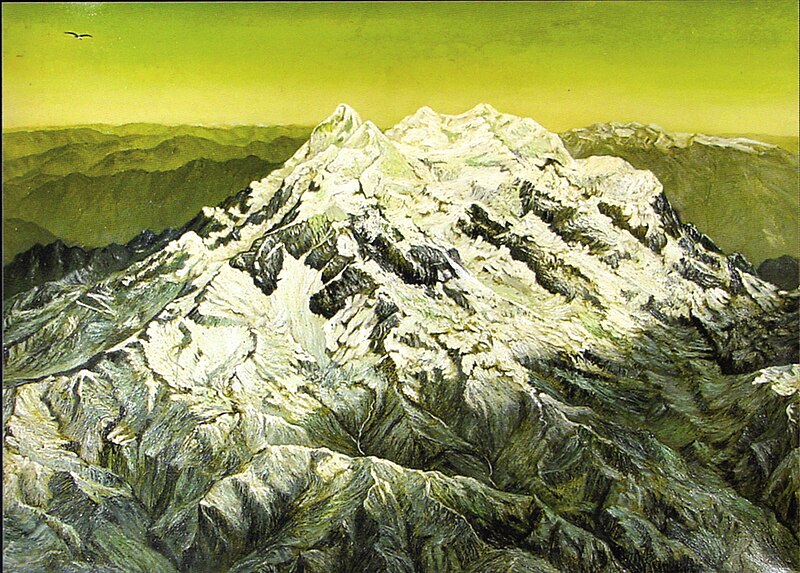ART FROM BOLIVIA post 1900
no
Bolivia ( i/bəˈlɪviə/, Spanish: [boˈliβja]), officially known as the Plurinational State of Bolivia (Spanish: Estado Plurinacional de Bolivia locally: [esˈtaðo pluɾinasjoˈnal de βoˈliβja], Quechua: Bulivya Mamallaqta, Aymara: Wuliwya Suyu),[10][11] is a landlocked country located in central South America. It is bordered by Brazil to the north and east, Paraguay and Argentina to the south, Chile to the southwest, and Peru to the west.
i/bəˈlɪviə/, Spanish: [boˈliβja]), officially known as the Plurinational State of Bolivia (Spanish: Estado Plurinacional de Bolivia locally: [esˈtaðo pluɾinasjoˈnal de βoˈliβja], Quechua: Bulivya Mamallaqta, Aymara: Wuliwya Suyu),[10][11] is a landlocked country located in central South America. It is bordered by Brazil to the north and east, Paraguay and Argentina to the south, Chile to the southwest, and Peru to the west.
Prior to European colonization, the Andean region of Bolivia was a part of the Inca Empire – the largest state in Pre-Columbian America. The conquistadors took control of the region in the 16th century. During most of the Spanish colonial period, this territory was known as Upper Peru and was under the administration of the Viceroyalty of Peru, which included most of Spain's South American colonies, although the area enjoyed substantial autonomy under the jurisdiction of the Royal Court of Charcas. After declaring independence in 1809, 16 years of war followed before the establishment of the Republic, named for Simón Bolívar, on 6 August 1825. Bolivia has struggled through periods of political instability and economic woes.
Bolivia is a democratic republic that is divided into nine departments. Its geography is varied from the peaks of the Andes in the West, to the Eastern Lowlands, situated within the Amazon Basin. It is a developing country, with a Medium Human Development Index score, and a poverty level of 53%.[12] Its main economic activities include agriculture, forestry, fishing, mining, and manufacturing goods such as textiles, clothing, refined metals, and refined petroleum. Bolivia is very wealthy in minerals, especially tin. Bolivia has gained global attention for its 'Law of the Rights of Mother Earth', one of the unique laws in the world that accord nature the same rights as humans.[13][14][15][16]
The Bolivian population, estimated at 10 million, is multiethnic, including Amerindians, Mestizos, Europeans, Asians and Africans. The main language spoken is Spanish, although the Guarani, Aymara and Quechua languages are also common and all four, as well as 34 other indigenous languages, are official. The large number of different cultures within Bolivia has contributed greatly to a wide diversity in fields such as art, cuisine, literature, and music.
(b. Bolivia, 1883; d. 1953).
One of the main figures in Bolivian art of the early twentieth century, Borda began by creating eclectic, detailed portraits of family members. His 1943 portrait of his parents was significant for its time. A growing sense of social commitment led him to work within Indigenism and portray native Bolivians, often within powerful local landscapes. Some of his allegorical works conveyed critiques of society, such as the 1918 Filicidio. During a second phase of development Borda penned an autobiographical novel, The Madman, published after his death in 1966. In his Critique of "isms" and the Triumph of Classical Art of 1948, Borda used specific figures that reject or approved artistic ideals. A laughing "mother earth" rejects Indigenism, while the Bolivian Mount Illimani, the Parthenon, the Venus de Milo, Homer, and Pericles reign. From 1950 to 1953 Borda experimented with color abstraction,

Critica de los ismos y triunfodel arte clasico
